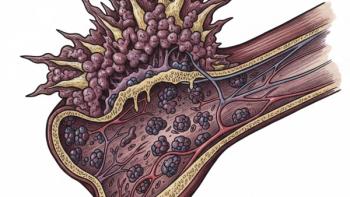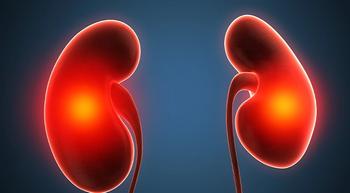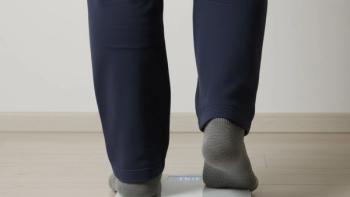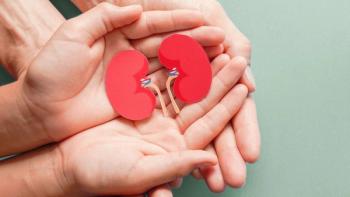
Twice-Daily Radiation Boosts Quality of Life in Small Cell Lung Cancer
Key Takeaways
- Tecentriq with chemoradiation improved long-term quality of life in limited-stage small cell lung cancer without increasing fatigue.
- Twice-daily radiation showed better survival and quality of life compared to once-daily radiation, easing concerns about its impact.
Adding Tecentriq to chemoradiation improved quality of life and supported twice-daily radiation for patients with limited-stage small cell lung cancer.
The addition of Tecentriq (atezolizumab) to chemoradiation therapy led to meaningful long-term improvements in quality of life, with similar quality-adjusted survival and no increase in fatigue, according to study findings presented at ASTRO 2025.
“While this study was not randomized between twice-daily versus once-daily radiation, these [quality of life (QOL)] findings suggest that relative to once-daily radiation, twice-daily radiation is associated with quality-of-life advantages from the patient perspective,” Dr. Benjamin Movsas, QOL chair of this NRG LU005 study as well as medical director of Henry Ford Cancer in Michigan, said during the presentation.
According to the study authors, this is the first large study to show that twice-daily radiation not only improved survival compared with once-daily radiation but also led to better long-term quality of life with fewer patients experiencing meaningful declines. Since this was done using modern radiation techniques in about 90% of patients, the findings help ease concerns about the impact of twice-daily treatment on quality of life and offer strong support for this approach in limited-stage small cell lung cancer, directly reflecting patients’ experiences.
More than 85% of patients completed the quality-of-life surveys at the start of treatment, and about 60% to 68% continued through 21 months. Patients who felt better at the start and had stronger lung function were more likely to complete surveys. Quality of life, measured by the FACT-TOI, went down during chemoradiation but improved by three months and stayed stable or better than before treatment through 21 months. At 15 months, quality-of-life changes were similar in both groups, but by 21 months fewer patients who received immunotherapy with chemoradiation had a meaningful decline (25% versus 38%).
Quality-adjusted survival, measured by EQ-5D-5L, was similar in both groups. Fatigue, measured by PROMIS, did not increase with immunotherapy. About half of all patients received twice-daily radiation, which was linked to better quality of life than once-daily radiation at every timepoint. This included lower rates of meaningful decline at the end of chemoradiation (36% versus 60%), at 15 months (28% versus 41%) and at 21 months (22% versus 39%).
In further analysis, factors tied to better quality of life included higher baseline quality-of-life scores, twice-daily radiation (at the end of chemoradiation, 15 months, and 21 months), cisplatin chemotherapy (at 15 months), and immunotherapy (at 21 months).
Trial Design
A total of 544 patients were randomly assigned to receive standard chemoradiation (platinum/etoposide every three weeks for four cycles with thoracic radiation — either 45 Gy twice daily or 66 Gy once daily — starting with the second cycle of chemotherapy) with or without Tecentriq, given every three weeks for up to one year starting with the second cycle.
Patients were grouped based on factors such as radiation schedule (twice daily versus once daily), chemotherapy type (cisplatin versus carboplatin), sex and performance status (ability to carry out daily activities). Patient-reported outcomes were measured using validated tools: FACT-TOI for quality of life, EQ-5D-5L for quality-adjusted survival, and PROMIS-Fatigue for fatigue. These were collected at the start, the end of chemoradiation, and at 3, 6, 15 and 21 months after chemoradiation.
A meaningful decline in quality of life on FACT-TOI was defined as a drop of 5 points or more from the start. Quality-adjusted survival was estimated using EQ-5D-5L scores combined with survival time. Changes over time and predictors of decline were analyzed using multivariable logistic regression, adjusting for treatment arm, baseline factors and initial quality-of-life scores.
Reference
- “Comprehensive Patient Reported Outcomes (Pros) From Nrg Lu005: A Randomized Trial Of Chemoradiation (Crt) +/- Atezolizumab In Limited-Stage Small Cell Lung Cancer (Ls-Sclc),” by Dr. Benjamin Movas, et al., ASTRO 2025.
For more news on cancer updates, research and education,





